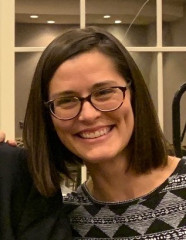SESSION + Live Q&A
Tesla Virtual Power Plant
A Virtual Power Plant (VPP) is a network of distributed energy-resources (often solar, wind, and batteries) that are aggregated to provide smarter and more flexible power generation, distribution, and availability. A VPP leverages assets for more than one purpose, and, in doing so, decentralizes generation, enables market participation for small generators, increases grid reliability, and smooths the intermittency of renewable generation while improving the economics of renewables.
Tesla's VPP consists of vertically integrated hardware and software, including both cloud and edge computing. The Tesla Energy infrastructure platform ingests and aggregates telemetry from tens of thousands of assets, including Powerwalls, Powerpacks, and Megapacks, with low latency, and robustly distributes control commands, handling measurement uncertainty and network intermittency. Tesla Autobidder leverages this infrastructure platform to optimize diverse asset fleets, decomposing the optimization algorithm across edge and cloud intelligence.
This talk will explore the evolution of Tesla's VPP architecture, including:
- The use of distributed, actor-model programming for virtually representing physical assets and performing low-latency, hierarchical aggregations of telemetry.
- Managing complex workflows for forecasting, optimization, bidding, and control that must be predictable, reliable, and resilient under market-timing, algorithmic, and physical constraints. These workflows must handle diverse inputs, including inputs from third parties, that are only eventually consistent.
- Using Reactive Streams for reliably interfacing disparate systems, respecting resource constraints, and managing high-volume, near-real-time data streams.
- Introducing functional programming techniques to make the software more composable, reliable, and testable.
- Trade-offs between training and running global and local forecasting and optimization models.
- The development of responsive user-interfaces for operations and energy-market participation.
Speaker

Colin Breck
Sr. Staff Software Engineer @Tesla
Colin Breck has experience developing software infrastructures for the near real-time monitoring and control of industrial applications. At Tesla, he works on distributed systems for the monitoring, aggregation, optimization, and control of distributed-energy assets, including solar generation,...
Read moreFind Colin Breck at:
Speaker

Percy Link
Staff Software Engineer @Tesla
Percy Link is a staff software engineer on the Energy Optimization team at Tesla, working on the Autobidder platform. Percy earned a Ph.D. in climate science and entered industry as a data scientist in smart grid applications. She has evolved into a software engineer, focusing especially on the...
Read moreFind Percy Link at:
From the same track
eBPF - Rethinking the Linux Kernel
The Linux kernel is undergoing the most fundamental architecture evolution in history and is becoming a microkernel. Why is the Linux kernel evolving into a microkernel? The potentially biggest fundamental change ever happening to the Linux kernel. This talk covers how companies like Facebook and...

Thomas Graf
Founding Member @CiliumProject
Evolution of Financial Exchange Architectures
The Disruptor was announced 10 years ago. A concurrent library for the Java programming language which provided a low-latency, high-throughput means to do asynchronous event processing as a central component to the LMAX's architecture.In the 10 years since Disruptor, Financial Exchange...

Martin Thompson
High Performance & Low Latency Specialist
Lessons From DAZN: Scaling Your Project with Micro-Frontends
Micro-frontends are a new architectural trend in the development of frontend applications. This architectural style can provide several benefits to your projects and organization, offering a level of decoupling never seen before in single-page applications or universal architectures. That said,...

Luca Mezzalira
Principal Solutions Architect @AWS
Managing Systems in an Age of Dynamic Complexity
Why is it that a single server can often have better uptime than a public cloud service?We used to manage systems. Instead, many of us now write and run dynamic control planes: the systems that run our user-facing systems. We find the dynamic control plane pattern in software-defined networking,...

Laura Nolan
Site Reliability Engineer @Slack, Contributor to Seeking SRE, & SRECon Steering Committee
Designing a Real-Time Global Sportsbook (From Scratch!)
Have you ever found yourself working on an established product and secretly wishing you could start it all again from scratch? Given the chance to pick from modern languages, platforms and technologies, how would you design your dream architecture? 12 months ago we were given this...

Ian Thomas
Senior Principal Engineer @thestarsgroup


